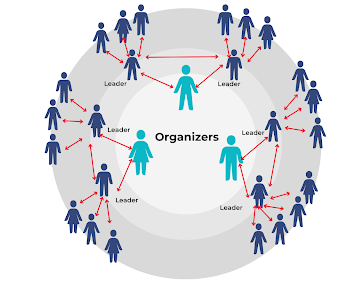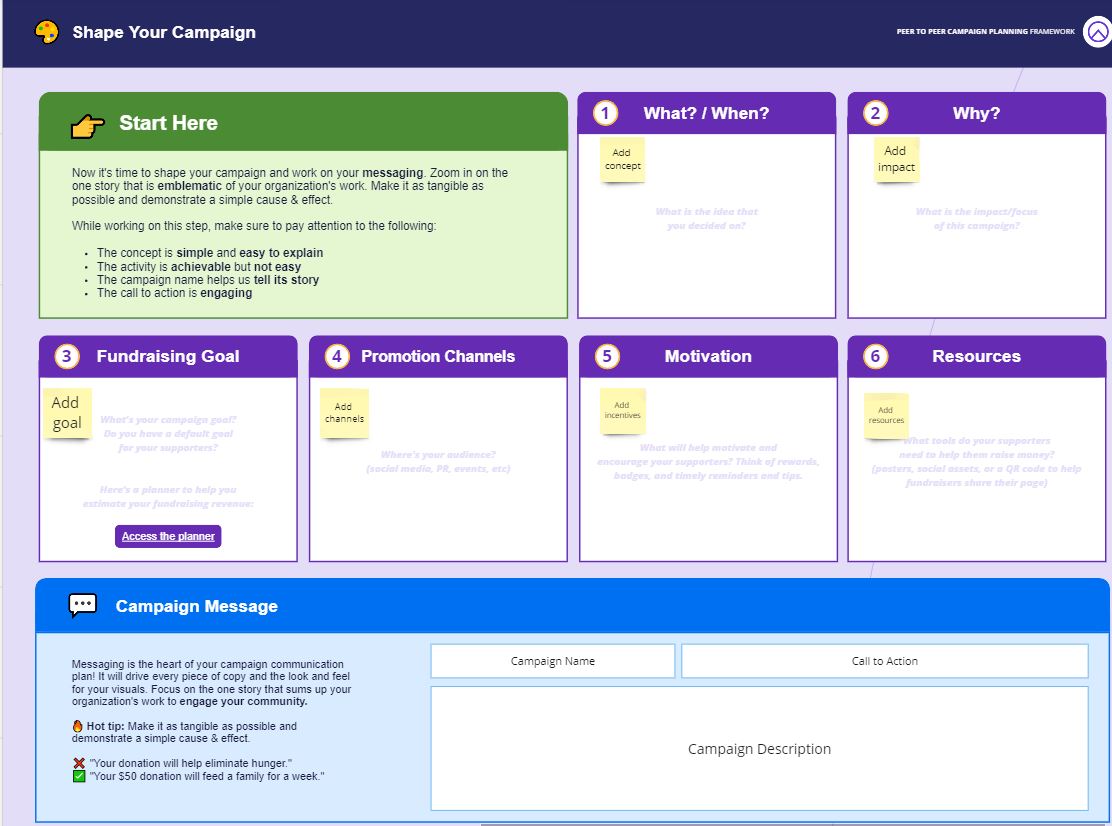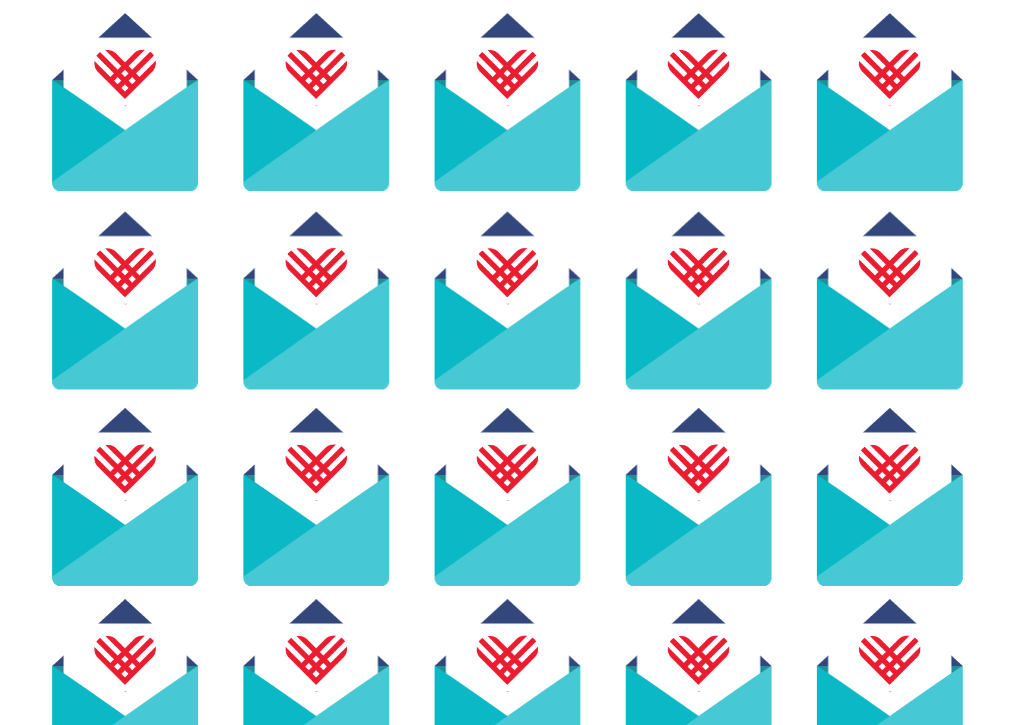
Peer-to-peer (P2P) fundraising is a powerful way to amplify your impact on GivingTuesday. By empowering your existing supporters to fundraise on your behalf, you can grow a community of engaged, like-minded individuals who are ready to take action in support of your mission.
For smaller nonprofits, P2P campaigns streamline the process: your most dedicated ambassadors lead the way, expanding your reach and connecting you with new supporters without adding extra strain to your team.
In this guide, we’ll share our top strategies for activating your community and making the most of GivingTuesday through peer-to-peer fundraising.

Peer-to-peer campaigns leverage social influence and connection. When an enthusiastic supporter leads the effort, their friends and family are more likely to contribute because they want to support someone they know. It’s like a digital version of a neighbor rallying the community—it encourages participation.
Beyond donations, P2P fundraising empowers supporters to take ownership of your mission, giving them a sense of involvement and making them feel like part of something bigger.
Ask your most committed supporters to create a personalized fundraising page for GivingTuesday. Have them highlight their connection to your mission and set a realistic, achievable goal.
They’ll then share this page with their respective networks, including friends, family members, and colleagues, and passionately ask for their support in reaching their financial target.
This approach not only leverages the trust and relationships of your supporters but also encourages a collective effort to achieve both the individual and the organization’s fundraising goals.
Tech considerations
Most donation platforms now offer peer-to-peer functionality, though some, like Facebook, may come with fees. Choose a platform that is easy for your fundraisers to use, as they will be setting up and managing their pages. Mobile-friendly functionality is essential.
Mobile Payments: Select a platform that supports mobile payment options, such as Apple Pay, Google Wallet, or M-Changa. This simplifies the donation process and removes barriers, making it easier for supporters to give.
Leaderboards: Consider a platform with leaderboard features, like GoFundMe Pro, Givebutter, or Donorbox. Leaderboards create friendly competition and a sense of community among fundraisers, motivating participants and boosting overall engagement.

Raisely made this great Miro board for planning a P2P campaign!
Find Your People
Who will help amplify your campaign? Consider these groups:
Committed donors: Individuals who have consistently supported your cause.
Active volunteers: People already engaged in your programs and mission.
Past beneficiaries or clients: Those who have directly experienced your impact.
Board members or trustees: Stakeholders with a vested interest in your organization’s success.
Friends and family of leadership or staff: Close contacts connected to your nonprofit community.
Be strategic: personally invite key supporters and also plan a broader open call to your wider community. Again, social proof matters, so launch a few personal fundraising pages first so potential ambassadors see real examples of engagement before joining.
Supporting your P2P fundraisers is critical, especially for those new to fundraising. Providing guidance, resources, and best practices not only builds their confidence but also maximizes the impact of your campaign.
Add a personal touch: Walk them through uploading a profile photo to make their page feel approachable and authentic.
Start with momentum: Suggest they make a small self-donation to show commitment and inspire others.
Tell their story: Guide them in sharing why your cause matters to them. Personal stories, like how your organization has impacted their lives or communities, are the most compelling motivators for donors.
Ensure every ambassador knows how to access and share the unique fundraising link you provide. This link is their primary tool for reaching their network and raising support.
Equip your ambassadors with ready-to-use materials to make sharing easy and effective:
Email templates they can customize and send to their networks
Text or WhatsApp message examples for quick outreach
Social media post suggestions, with encouragement to personalize the messaging
Printable materials, including instructions for adding a QR code linking to their fundraising page
Hashtag guidance — remind them to use #GivingTuesday to increase visibility and engagement
By equipping your ambassadors with these tools and guidance, you increase their confidence and give your P2P campaign the best chance of success, benefiting both your fundraisers and your nonprofit.
Keep your fundraisers energized and feeling appreciated:
Stay connected: Set up a WhatsApp group or email chain so your team can celebrate wins, swap tips, and cheer each other on.
Celebrate every milestone: Recognize achievements like reaching a percentage of their goal, hitting a donor count, or raising their first $100. Every win matters!
Send friendly reminders: Check in regularly to keep fundraisers on track. Calendar invites or phone notifications can nudge them when it’s time to post or send an email.
Show your gratitude: People love being recognized for doing good. After the campaign, thank your team with a small gift, branded merch, or at least a heartfelt note (email or mail) highlighting the impact they helped make.
When you celebrate effort and success, your fundraisers feel valued, motivated, and even more connected to your mission. That energy carries into every future campaign.
Guide to P2P Fundraising for GivingTuesday (Mightycause)
P2P Fundraising Guide (Donately)
Podcast Episode on Unlocking the Power of Community Giving (We Are Good)
30 P2P Campaign Ideas (One Cause)

Sign up for GivingTuesday's e-newsletter to receive more best practices, tips, and tactics to make the most of the global day of generosity.
Sign Up